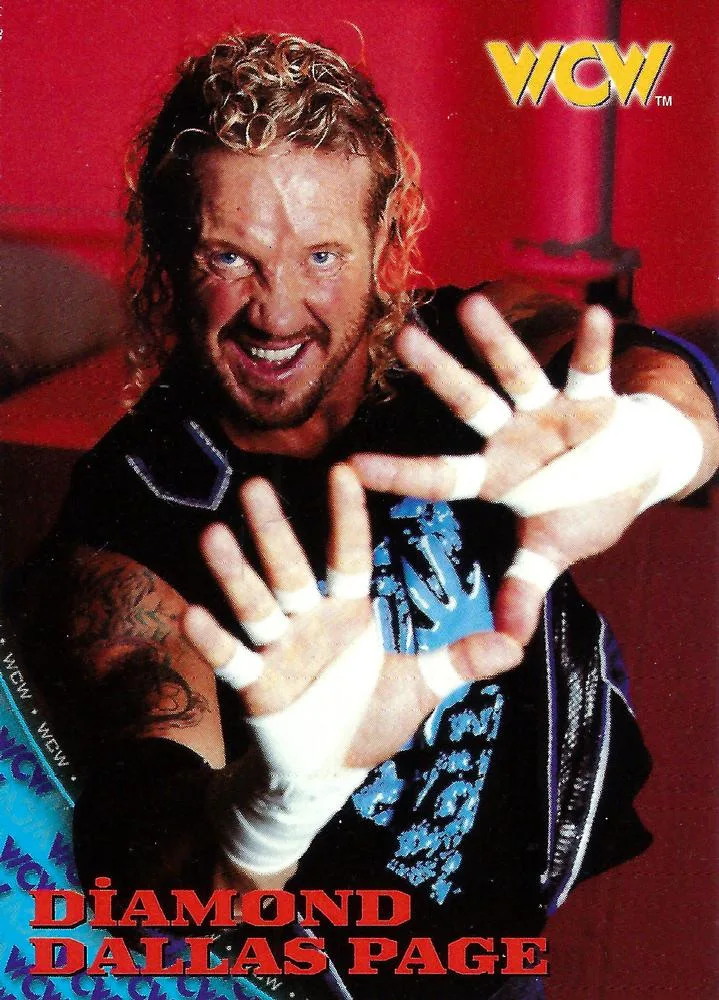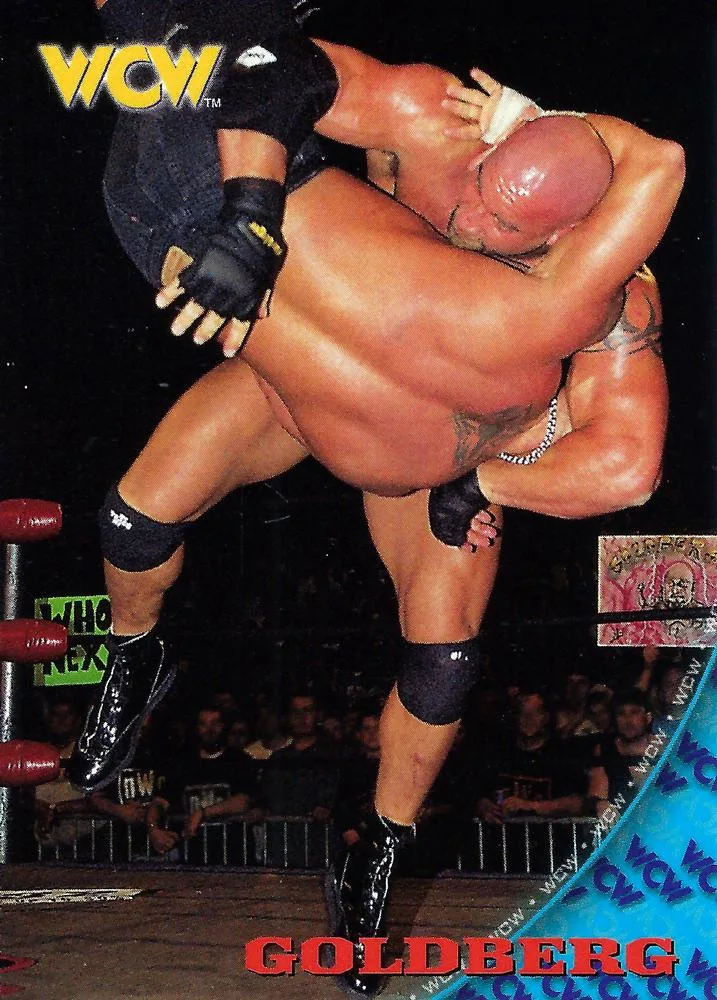
Tradition Meets Innovation in an Iconic Set
In 1998, the professional wrestling landscape was dominated by the Monday Night Wars between World Championship Wrestling (WCW) and the World Wrestling Federation (WWF). WCW had built its reputation on traditional wrestling values, emphasizing technical skill, athletic competition, and clear-cut heroes battling villains. This approach attracted both established stars and promising newcomers who appreciated WCW’s focus on in-ring excellence.
Our previous article explored how the rebellious New World Order (nWo) dominated much of WCW’s programming and the 1998 Topps WCW/nWo set. However, these trading cards captured something else equally compelling: a roster of phenomenal talent who remained faithful to the company’s traditional wrestling roots while helping define the sport’s future.
Embracing a Classic Style of Wrestling
The WCW’s commitment to old-time wrestling was exemplified throughout the set by stars like Diamond Dallas Page (DDP), whose organic popularity as a fan favorite stemmed from his in-ring ability and steadfast refusal to join the nWo. That culminated in a WCW World Heavyweight Championship match against the undefeated Goldberg at Halloween Havoc 1998.

Booker T. also demonstrated the rise of homegrown talent. After winning multiple tag team championships alongside his brother Stevie Ray as part of Harlem Heat, Booker T. established himself as a top singles competitor in late 1997. His innovative blend of power moves and agility, combined with natural charisma, quickly earned him the prestigious World Television Championship in 1998. This success, however, only marked the beginning of his ascent. Ultimately, he would become a five-time World Heavyweight Champion and the company’s final standard-bearer in 2001.
Flashy Matches and Complex Characters
The Cruiserweight division represented another cornerstone. While maintaining WCW’s emphasis on technical excellence, these athletes added a dynamic aerial dimension that revolutionized American wrestling. Dean Malenko epitomized the division’s technical foundation, earning his “Man of 1,000 Holds” moniker through masterful mat wrestling. Rey Mysterio Jr. and Juventud Guerrera brought the acrobatic style of Lucha Libre from Mexico to American audiences.
Chris Jericho, on the other hand, proved equally adept at both wrestling and entertainment; his memorable mock tribute to Malenko’s technical prowess, where he spent an entire commercial break reading an absurd list of 1,004 holds, showed how the division balanced athleticism with character work. Even on secondary shows like WCW Worldwide, matches between these performers consistently delivered the high-quality wrestling that defined WCW’s approach, and their cards in this set are highly sought after by collectors.
While the cruiserweights demonstrated how WCW could evolve while honoring wrestling fundamentals, other stars like Raven pushed the boundaries of storytelling. Through his faction, The Flock, he brought psychological complexity to WCW’s programming, crafting intricate narratives that transcended the simple good-versus-evil dichotomy. By manipulating outcasts and misfits on the roster, he created a compelling anti-hero persona that challenged both the nWo’s straightforward rebellion and traditional wrestling’s clear moral divisions. His card in the 1998 set represents WCW’s willingness to explore more nuanced characters.
The Reign of Goldberg
The phenomenon of Goldberg culminated in arguably the most sought-after card in the 1998 Topps WCW/nWo set: his rookie card. This card captures Goldberg’s meteoric rise and undefeated streak.
Goldberg’s dominance felt authentic, and he connected with fans on a fundamental level. Much like the legendary Bruno Sammartino, whose lengthy reign as WWF Champion resonated in an era focused on powerful, relatable heroes, Goldberg’s no-nonsense approach struck a chord with the modern audience. His rise peaked on July 6, 1998, when 45,000 fans packed the Georgia Dome to witness him defeat Hollywood Hogan for the WCW World Heavyweight Championship.

Despite minimal promos or complex storylines, Goldberg’s intense matches and unstoppable power moves made him a cultural phenomenon. His rookie card commemorates this remarkable ascent, marking his first appearance in mainstream wrestling collectibles and representing a pivotal figure in WCW’s battle against the New World Order (nWo).
A Lasting WCW Legacy in Cards
More than just a snapshot of the dominant nWo, the 1998 Topps WCW set is a vital record of the World Championship Wrestling roster that stood against them. While the autograph series was an important innovation in The Hobby, the set’s enduring appeal for many lies in its comprehensive representation of WCW’s unique identity during this pivotal era.
From the dedication of veterans like DDP to the explosive arrival of phenoms like Goldberg, the revolutionary, high-flying style of the cruiserweights, and the complex narratives woven by characters like Raven, these cards immortalize the talent that defined WCW’s distinct approach.
More Topps Wrestling
- The Best Andre the Giant Topps WWE Cards to Collect
- The Best Jade Cargill Topps WWE Cards to Collect
- 75 Cards, One Historic Night | The 1987 Topps Wrestling Set